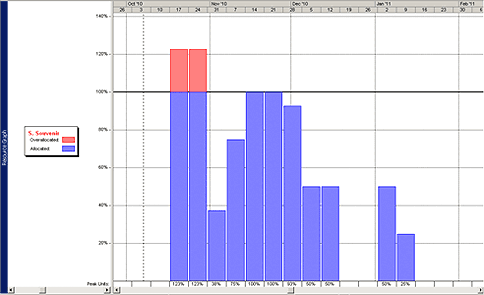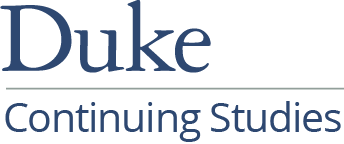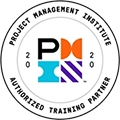The Principles of Project Management: A Crash Course for Pharmaceutical and Biotechnology Professionals
I've  planned hundreds of projects in the Pharmaceutical, Medical Device and Biotechnology industries, all using the same methodology and I always notice the same patterns within the teams as I plan them:
planned hundreds of projects in the Pharmaceutical, Medical Device and Biotechnology industries, all using the same methodology and I always notice the same patterns within the teams as I plan them:
- Pleasant surprise that I am consulting them while creating the plan
- Shock that I expect them to volunteer to work on tasks and take responsibility for them
- Disbelief when I ask them, on a task-by-task basis, how many hours of effort a task will take them in addition to its duration
- Acceptance as they see that they are getting no additional work, just organizing their work and others into a coherent plan
- Happiness when the project plan is complete and they can predict their work for the next few months.
Not quite the five stages of grief but something akin to a positive version of that. By insisting on step three, I end up with a project plan that people can use to predict their workloads, better estimate their task durations, and stand by their overall project schedules.
 So how do we get there? Like every well-planned project, we start with a Work Breakdown Structure (WBS) broken down to the activity level where each task has a verb-noun format that makes it clear what is to be done (draft cleaning validation protocol, or perform biocompatibility testing on samples).
So how do we get there? Like every well-planned project, we start with a Work Breakdown Structure (WBS) broken down to the activity level where each task has a verb-noun format that makes it clear what is to be done (draft cleaning validation protocol, or perform biocompatibility testing on samples).
After we”ve figured out all the tasks, we need to enter them into an MS-Project Gantt chart. We”ll type them into a blank Gantt chart, starting with the first deliverable, then indenting all the tasks below it which lead up to that deliverable, then out-denting for the next deliverable and indenting all its tasks until we”ve entered it all. Then, I project this up on a wall and ask four questions to the participants:
- Who will be working on this activity?
- Who will take responsibility for this activity?
- How many hours will you spend in effort on this activity?
- What is the overall duration of this activity?
I enter the resources, starting with the person who took responsibility for the task, into the resource column. Then, I enter the total effort in hours in the column I inserted into MS-Project (the “work” column) and then the duration in that column. Most likely the people are not working full-time on most of these activities, so the percentage of time people are working will be entered automatically in the resource column. Be sure you follow the below steps or this will not work:
- Highlight all the tasks by clicking on the top left grey box above the number 1
- Press the Task Information icon on the toolbar
- Click on the Advanced tab
- Under Task Type, scroll down to Fixed Work and select that option
You will have to repeat these above steps if you insert tasks so try to cut and paste tasks in instead. Now your tasks will look like this:

More importantly, if you go to the “View Resource Graph” selection, you will see your resources” time being used up like this:

This may be OK if S. Souvenir is only working on your project during this time period, and has no other activities to work on in her function. Then she needs to pull some overtime during the red period and take some comp time after that to make up for the effort.
But what if she is working on two other projects during that time? You”ll need to take non-critical work off her plate during this period or find someone else with her skills to do the work or, last case, increase the duration of the activities at that time to bring down her utilization.
Word of warning — do this manually. MS-Project has a button you can press to automatically remove over-usage of people. This will stretch your timeline into the next century and you cannot undo this. Do it on a case-by-case basis using your knowledge of the true events taking place at this time.
Can you do this on a 2,000 line new drug development project? Yes, but in stages. In those cases, I will use the “Rolling Wave” planning tool where I plan out, in this level of detail, the next eight months of activities. Then two months later, I will plan out the tasks that are six months or greater away and continue to stay six months ahead of today.
How do you hold quick status meetings on a 2,000 line project? Even on one of these huge, multi-year projects, that many tasks are not being worked on at any particular time. So, when I hold weekly status meetings, I only open up the few relevant deliverables and highlight tasks before people show up to my half-hour status meetings. Then, I look for status on these few tasks and move everyone along nicely.
But after you have planned out, in excruciating detail, a large pharmaceutical or biotechnology project, and you are ready to present this to management, what do you do when you know that they are expecting an earlier date?
- Don”t tell them it that their date is impossible (they will find someone who says they can do it)
- Don”t go back in time to when the project should have started and start then (time machines still don”t exist)
- Don”t tell everyone to cut the durations of their tasks to make the artificial management mandated date (you”ll fall behind and look like a fool)
Instead, look to your assumptions, push the critical path with crashing and fast-tracking, ask for additional resources or budget, ask to remove scope, and make sure that management understands the assumptions and risks associated with the timeline you are presenting. They will realize that you are the right person to handle this project, and you will get it done as soon as is humanly possible, given the constraints they set at the beginning. Good luck!
About the Author:
Bruce Fieggen, PMP®, instructor for Corporate Education Group, VP of Project Management at QPharma, has been managing projects in the Pharmaceutical and Medical Device industries for 25 years. From one-hundred thousand dollar validations to one-hundred million dollar new product developments, Bruce successfully uses a methodology that stresses personal commitment of team members to own and complete tasks. Bruce teaches this methodology to hundreds of people a year and also plans over thirty projects a year for his clients; in addition to this, Bruce has set up multiple Project Management Offices and created numerous Project Management guides.
For more information on this topic, as well as how Corporate Education Group can help power your organization’s performance, contact us via email or call 1.800.288.7246 (US only) or +1.978.649.8200. You can also use our Information Request Form!
I've  planned hundreds of projects in the Pharmaceutical, Medical Device and Biotechnology industries, all using the same methodology and I always notice the same patterns within the teams as I plan them:
planned hundreds of projects in the Pharmaceutical, Medical Device and Biotechnology industries, all using the same methodology and I always notice the same patterns within the teams as I plan them:
- Pleasant surprise that I am consulting them while creating the plan
- Shock that I expect them to volunteer to work on tasks and take responsibility for them
- Disbelief when I ask them, on a task-by-task basis, how many hours of effort a task will take them in addition to its duration
- Acceptance as they see that they are getting no additional work, just organizing their work and others into a coherent plan
- Happiness when the project plan is complete and they can predict their work for the next few months.
Not quite the five stages of grief but something akin to a positive version of that. By insisting on step three, I end up with a project plan that people can use to predict their workloads, better estimate their task durations, and stand by their overall project schedules.
 So how do we get there? Like every well-planned project, we start with a Work Breakdown Structure (WBS) broken down to the activity level where each task has a verb-noun format that makes it clear what is to be done (draft cleaning validation protocol, or perform biocompatibility testing on samples).
So how do we get there? Like every well-planned project, we start with a Work Breakdown Structure (WBS) broken down to the activity level where each task has a verb-noun format that makes it clear what is to be done (draft cleaning validation protocol, or perform biocompatibility testing on samples).
After we”ve figured out all the tasks, we need to enter them into an MS-Project Gantt chart. We”ll type them into a blank Gantt chart, starting with the first deliverable, then indenting all the tasks below it which lead up to that deliverable, then out-denting for the next deliverable and indenting all its tasks until we”ve entered it all. Then, I project this up on a wall and ask four questions to the participants:
- Who will be working on this activity?
- Who will take responsibility for this activity?
- How many hours will you spend in effort on this activity?
- What is the overall duration of this activity?
I enter the resources, starting with the person who took responsibility for the task, into the resource column. Then, I enter the total effort in hours in the column I inserted into MS-Project (the “work” column) and then the duration in that column. Most likely the people are not working full-time on most of these activities, so the percentage of time people are working will be entered automatically in the resource column. Be sure you follow the below steps or this will not work:
- Highlight all the tasks by clicking on the top left grey box above the number 1
- Press the Task Information icon on the toolbar
- Click on the Advanced tab
- Under Task Type, scroll down to Fixed Work and select that option
You will have to repeat these above steps if you insert tasks so try to cut and paste tasks in instead. Now your tasks will look like this:

More importantly, if you go to the “View Resource Graph” selection, you will see your resources” time being used up like this:

This may be OK if S. Souvenir is only working on your project during this time period, and has no other activities to work on in her function. Then she needs to pull some overtime during the red period and take some comp time after that to make up for the effort.
But what if she is working on two other projects during that time? You”ll need to take non-critical work off her plate during this period or find someone else with her skills to do the work or, last case, increase the duration of the activities at that time to bring down her utilization.
Word of warning — do this manually. MS-Project has a button you can press to automatically remove over-usage of people. This will stretch your timeline into the next century and you cannot undo this. Do it on a case-by-case basis using your knowledge of the true events taking place at this time.
Can you do this on a 2,000 line new drug development project? Yes, but in stages. In those cases, I will use the “Rolling Wave” planning tool where I plan out, in this level of detail, the next eight months of activities. Then two months later, I will plan out the tasks that are six months or greater away and continue to stay six months ahead of today.
How do you hold quick status meetings on a 2,000 line project? Even on one of these huge, multi-year projects, that many tasks are not being worked on at any particular time. So, when I hold weekly status meetings, I only open up the few relevant deliverables and highlight tasks before people show up to my half-hour status meetings. Then, I look for status on these few tasks and move everyone along nicely.
But after you have planned out, in excruciating detail, a large pharmaceutical or biotechnology project, and you are ready to present this to management, what do you do when you know that they are expecting an earlier date?
- Don”t tell them it that their date is impossible (they will find someone who says they can do it)
- Don”t go back in time to when the project should have started and start then (time machines still don”t exist)
- Don”t tell everyone to cut the durations of their tasks to make the artificial management mandated date (you”ll fall behind and look like a fool)
Instead, look to your assumptions, push the critical path with crashing and fast-tracking, ask for additional resources or budget, ask to remove scope, and make sure that management understands the assumptions and risks associated with the timeline you are presenting. They will realize that you are the right person to handle this project, and you will get it done as soon as is humanly possible, given the constraints they set at the beginning. Good luck!
About the Author:
Bruce Fieggen, PMP®, instructor for Corporate Education Group, VP of Project Management at QPharma, has been managing projects in the Pharmaceutical and Medical Device industries for 25 years. From one-hundred thousand dollar validations to one-hundred million dollar new product developments, Bruce successfully uses a methodology that stresses personal commitment of team members to own and complete tasks. Bruce teaches this methodology to hundreds of people a year and also plans over thirty projects a year for his clients; in addition to this, Bruce has set up multiple Project Management Offices and created numerous Project Management guides.
For more information on this topic, as well as how Corporate Education Group can help power your organization’s performance, contact us via email or call 1.800.288.7246 (US only) or +1.978.649.8200. You can also use our Information Request Form!


- ©2025 Corporate Education Group, operated by CEG Operating Company, LLC. All Rights Reserved.
Privacy Policy | Terms and Conditions - Corporate Education GroupSM and Learning That Powers PerformanceSM are service marks of Corporate Education Group, Inc., PMI®, PMP®, CAPM®, PgMP®, PMBOK®; and the PMI®; Registered Education Provider logo are registered trademarks of the Project Management Institute, Inc. CBAP® and IIBA® are registered trademarks of International Institute of Business Analysis. All other trademarks mentioned on this site are property of their respective owners. All rights reserved. CEG is an approved Authorized Partner within the Blanchard Authorized Partner Program and is licensed to market, sell, and train SLII®.
